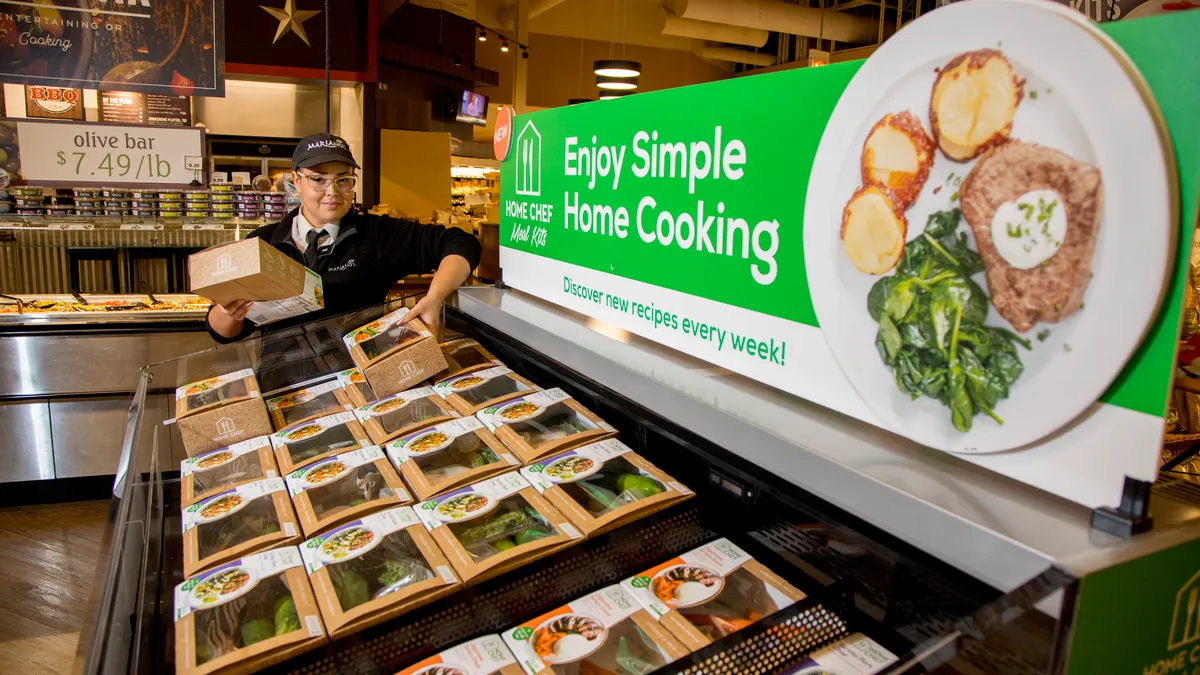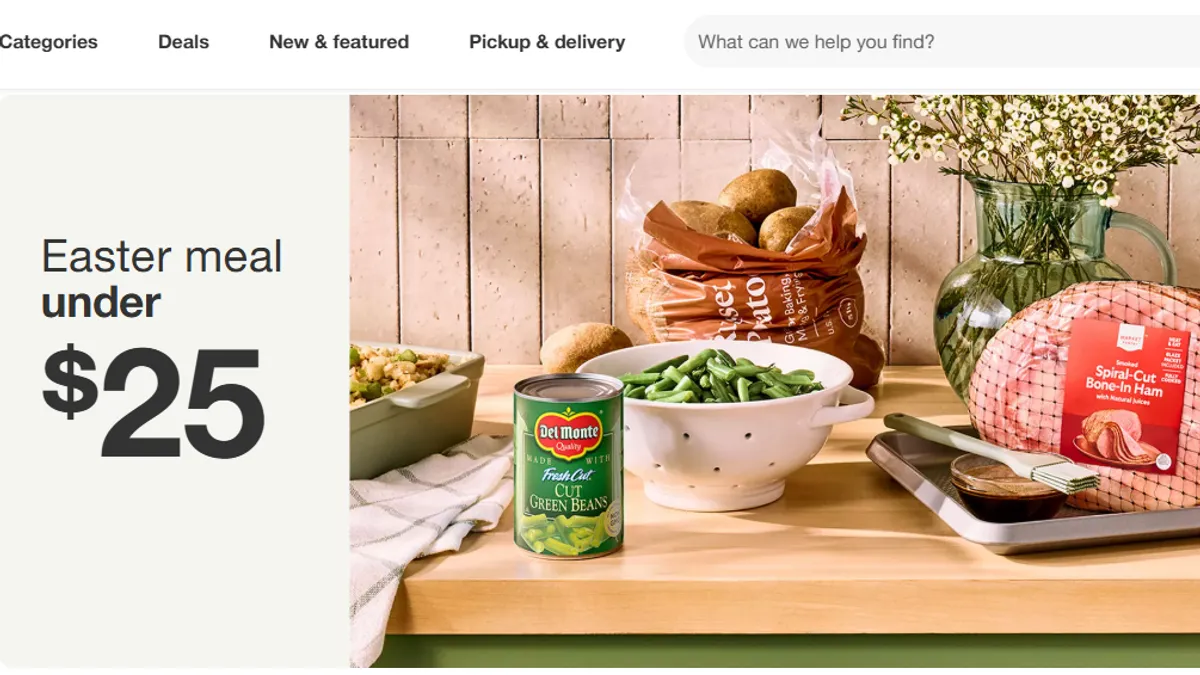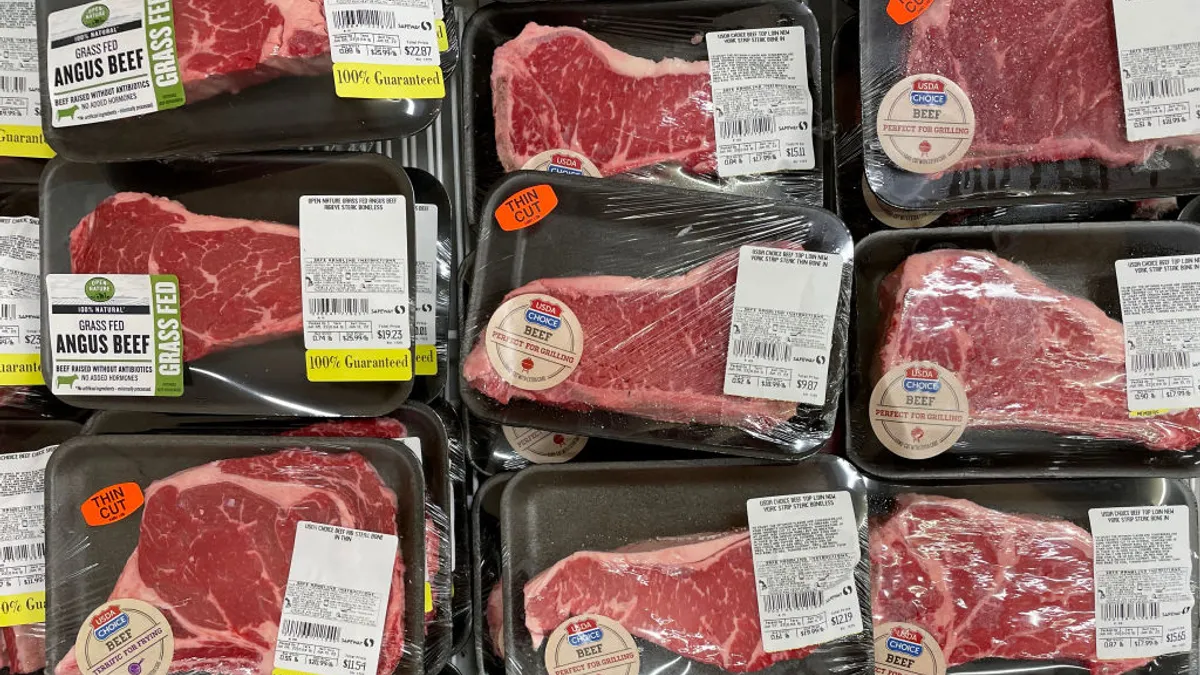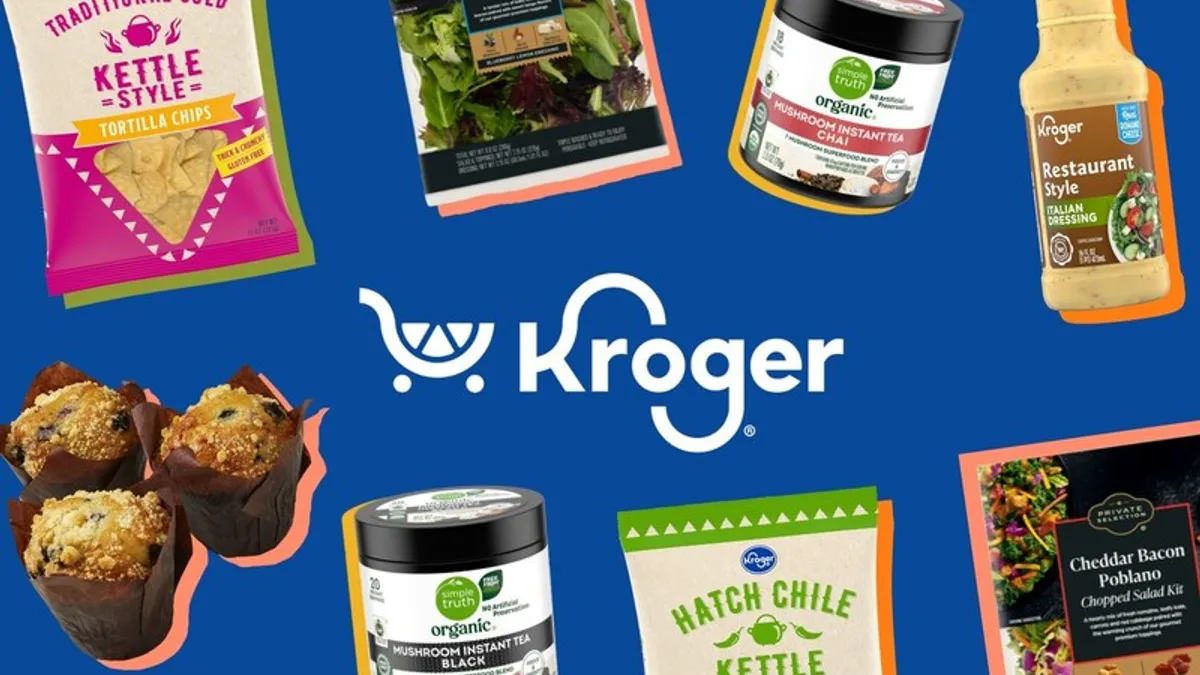Most consumers give up on meal kits shortly after adopting them. Will retailers do the same?
For now, the opportunity seems promising. Meal kit brands, many of which have struggled to make money online, have developed retail-ready products in a bid to reach new consumers. And just about every major grocery chain, eager to find innovative meal solutions, has worked meal kits into their prepared foods rotation, whether through a private label line or sourcing agreement with a meal kit brand. Two grocers — Kroger and Albertsons — have gone so far as to acquire meal kit companies.
Research shows demand continues to grow despite all the doom-and-gloom headlines surrounding companies like Blue Apron. According to Nielsen data, meal kit users increased 36% last year over 2017. In the last six months of 2018, 14.3 million Americans bought meal kits, a 3.8 million increase over the same period one year prior.
Rising interest could bode particularly well for retail meal kits, which don’t require a subscription — one of the main barriers to purchase. But there’s still a lot that retailers as well as meal kit companies need to figure out, according to sources interviewed by Grocery Dive, from in-store merchandising and optimizing assortment to extending the life of products that weren’t designed to sit on retail shelves.
"A lot of retailers are trying to figure out what their strategy is," said Meagan Nelson, director of Nielsen’s Fresh Growth + Strategy team. "Do they go full-in on a true meal kit, do a hybrid or just up their foodservice game? I think there's a lot of different strategies playing out right now."
Shelf life and store placement
The traditional meal kit model is built around freshness and efficiency. Consumers reserve their selections days or weeks in advance, allowing companies to line up sourcing with demand. They then ship the meal directly to the customer.
In the retail environment, products often ship through a distributor and can sit on shelves and in back rooms for days. If meal kits don’t turn quickly, they can spoil and go down as a loss for the grocer.
Shelf life is one of the major challenges grocers face with meal kits, according to Sean Butler, former senior director of retail with Chef’d and now managing director with LIDD, a supply chain consulting firm that works with CPGs and meal kit companies.
"You’ve got a minimum of two weeks [of] shelf life that’s required for broad success," Butler told Grocery Dive.
In large cities where awareness and demand are high, meal kits will sell quickly and may not require any reformulating, Butler said. He cited Amazon's meal kits, which sell online as well as at Amazon Go stores and in select Whole Foods locations, as an example. But large grocers like Kroger and Albertsons need meal kits to sell in second- and third-tier cities as well, where customers may not be clamoring for them.
Meal kit companies are addressing the issue. Harry Hartman, manager of product innovation with HelloFresh, which offers meal kits in H-E-B, Giant, Fareway and Hannaford stores, says the company is "always looking for new ways to extend shelf life," but declined to name any specific steps.
"Our retail kits are inspired by widely successful online recipes that are then re-mastered to best suit the retail environment," he wrote in an email to Grocery Dive.
Brian Irwin, vice president of retail with Kroger-owned Home Chef, said retail efforts have focused on those meals and ingredients with the best shelf life, but otherwise the firm founded in 2013 hasn’t done much reformulating. The exception is its proteins.
"We haven’t been able to nail all of our proteins yet," Irwin said in an interview. "Shrimp is a good example. We’re trying to reformulate shrimp recipes so they hold up better in-store."
One meal kit maker that's taking square aim at the shelf life issue is True Food Innovations. After the Newport Beach, California-based firm bought Chef'd last year, it reformulated the brand’s meal kits, stretching a two-week shelf life period to 55 days through patent-pending innovations and high-pressure processing (HPP), a cold pasteurization technique.
Robert Jones, True Foods' president, recently told Food Navigator-USA that the company has meal kits in around 800 grocery stores and plans to "double or triple" that number this year.
“You’ve got a minimum of two weeks shelf life that’s required for broad success.”

Sean Butler
Managing director, LIDD
Grocers are used to routing and merchandising highly perishable foods, of course, but meal kits are a new category for them. Butler said grocers and meal kit companies rotate selections regularly in order to generate consumer interest and keep regular customers engaged. But doing so makes it hard to measure sales through traditional metrics that focus on range and frequency of shopper purchases on individual products.
"You can’t just have Chicken Milanese every day, month after month," Butler said. "You have to introduce new options, keep menus fresh with the seasons and with trends, and continue to sell customers on the excitement of the category."
There’s also the question of where to merchandise meal kits in stores. The deli and prepared foods sections are common destinations, but retailers are also tinkering with standalone cases in other departments. Kowalski’s private label meal kits along with a line from Local Crate appear in the meat department of the chain’s 11 Twin Cities area stores. Select Walgreens stores are merchandising HelloFresh meal kits at the front of the store.
Nelson believes the front of the store is the best place to merchandise meal kits. There, retailers can capitalize on their impulse-driven appeal and present a dinner solution before shoppers have the chance to stock up on other ingredients.
One hurdle retailers face here, Nelson noted, is meat and produce managers who don’t want meal kits taking their sales away.
"You can’t have in-fighting over sales," she told Grocery Dive. "You have to think about the consumer solution and how best to market those. And if you think about the consumer solution, having them upfront is going to be better because that’s going to help (consumers) plan the rest of their shopping trip."
'Right-sizing' the opportunity
In many ways, grocery stores are the ultimate test of the meal kit model — a venue that strips away subscription commitments and online marketing and allows consumers to see and purchase the meals in-person. Will meal kits add crucial depth to grocers' prepared foods selections or prove to be a fad, as some have claimed?
Nielsen data shows that more shoppers are purchasing meal kits in stores, but the numbers are far from staggering. As retailers rolled out 187 new meal kits in 2018, the percentage of shoppers who bought kits exclusively in stores increased to 32% from 30% the year prior. The percentage of meal kit shoppers who bought online and in stores rose from 3% to 8%.
Adam Zbar, CEO of Sun Basket, which recently raised $30 million in Series E funding, said grocers and meal kit companies have to do more than just plunk online kits onto store shelves. While Sun Basket is not on store shelves yet, Zbar said the company has held talks with numerous chains and is weighing the right opportunity.
"You can’t just take that online product, wrap it in three layers of plastic and put it in stores. That’s not very compelling to a consumer," he told Grocery Dive.
“You can’t just take that online product, wrap it in three layers of plastic and put it in stores. That’s not very compelling to a consumer.”

Adam Zbar
CEO, Sun Basket
Meal kit companies have taken up this challenge as they diversify beyond the traditional pre-portioned, culinary color-by-numbers scheme. Online, they’ve launched lunch and snack options, and have moved into faster-prep products like ready-to-eat and ready-to-heat. Now, they’re making those offerings available to retailers. Home Chef recently came out with oven-ready, heat-and-eat and lunch meal kits for sale at Kroger stores.
Grocers already stock many heat-and-eat and grab-and-go foods, including a large selection of frozen foods that are seeing an uptick in sales. But Nelson believes the added variety can be a plus for retailers, noting the quality ingredients and brand-name awareness meal kits bring to the table. Retailers, she said, need to be willing to experiment with assortment and in-store merchandising.
"The idea of having a wide range is absolutely going to play with retailers," Nelson said. "Their challenge is going to be figuring out, 'how deep do I go down each avenue, and how do I merchandise it?'"
Determining that optimal assortment could be a painful process, Butler noted. As meal kit companies and retailers widen their assortment, he said, they incur higher shrink and risk depleting their contribution margins. It’s also a very complex undertaking for retailers to "right-size" assortments across a range of markets, he noted.
"You wouldn’t put the same assortment in a Chicago Jewel-Osco that you would an Idaho Albertsons, because consumers just want very different meals," Butler said. "And yet, it’s very difficult from a supply chain perspective to develop the meals and then source the ingredients, convert them to a finished good, in a way that fits within all the essential constraints to enable a successful product."
Even so, Butler believes meal kits can be a potent weapon for retailers as they battle with alternative formats and restaurant delivery services, which he cited as a growing threat to grocers' meal strategy.
"Retailers have to make changes and become very good at meal delivery in order to compete with that," he said.
Victor Martino, a food industry veteran and founder of Third Wave consulting, believes meal kits are in a tricky spot. The traditional kit model appeals to a narrow audience, he said, while expansion into the quick-prep and ready-to-eat space opens them up to more competition. But he acknowledged meal kits can add depth and an element of excitement to grocers' assortment.
"Grocery stores are a place of discovery, so that does play in meal kits' favor," Martino said.
Home Chef, which now has meal kits in 1,000 Kroger stores, sees an opportunity to become a powerhouse store brand on par with Simple Truth. Irwin said his company and Kroger are still working through many of the finer points of merchandising, from where to place products in stores to how often to rotate meals. The traditional meal kits rotate weekly, he said, while the oven-ready and heat-and-eat meal kits generally rotate once a month.
Irwin said the ultimate goal is to effectively pair Home Chef’s product innovation with Kroger’s merchandising expertise
"We and Kroger are talking about this: How do we deal with meal solutions?" he said. "The definition of what is a meal solution or what is a prepared food has such a broad spectrum to it. The good news is that there's a lot of opportunity for us to innovate products and for Kroger to unify the branding."





















